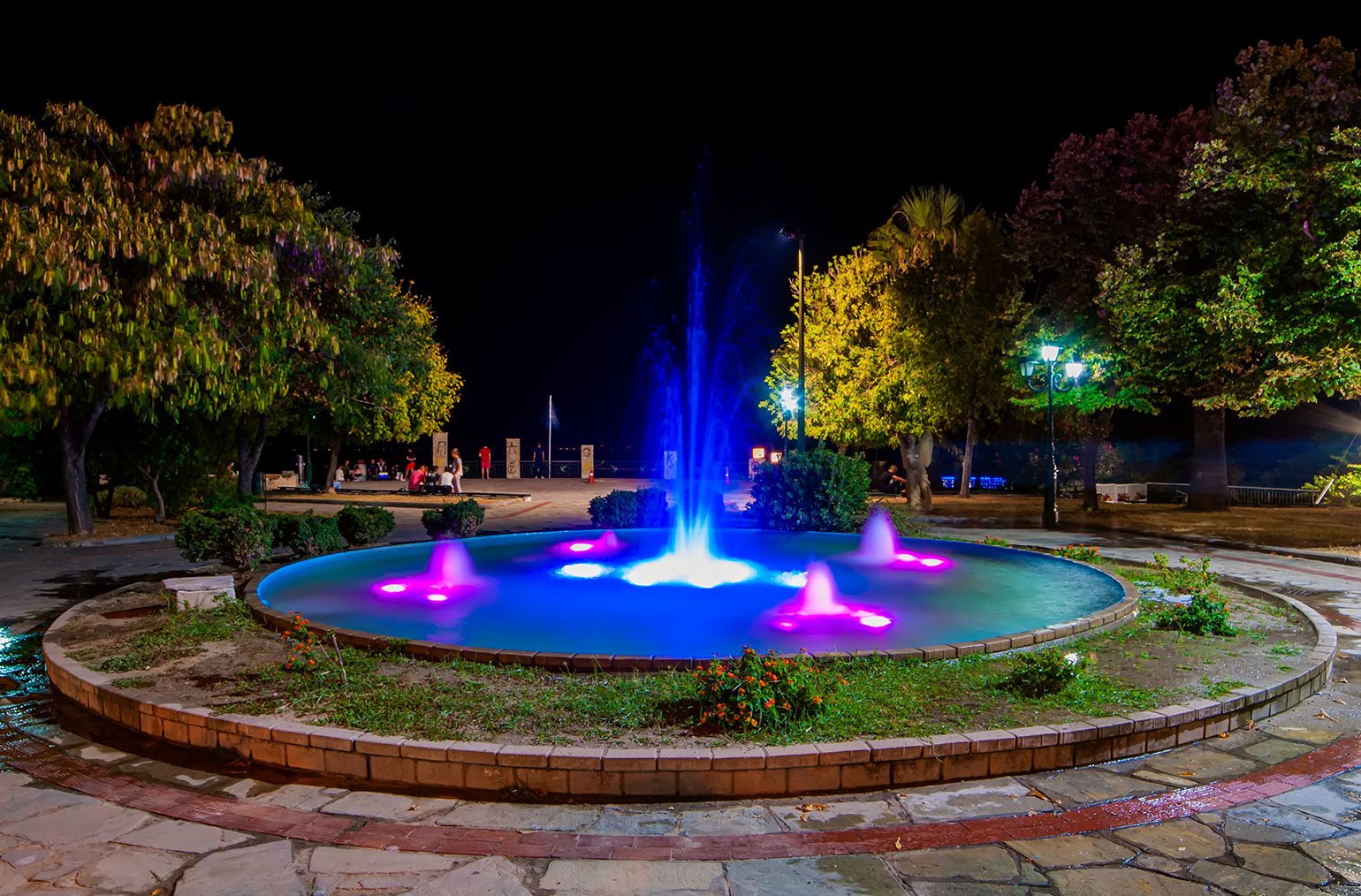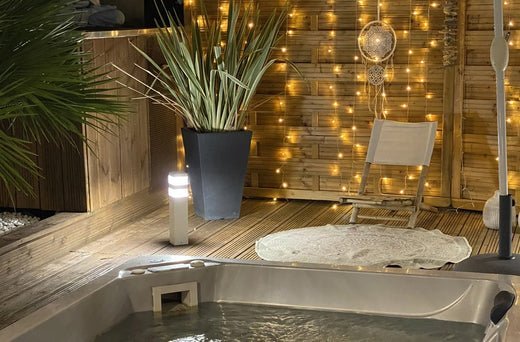
For successful outdoor lighting, there are many criteria to consider, such as luminaire design, IP rating and color temperature, but that's not all. It's also important to know what intensity to choose. You won't choose the same luminous intensity forlighting an outdoor terrace, lighting an entrance, or marking a path. What's more, you shouldn't confuse wattage with light intensity.
So how do you go about it? How do you choose the ideal intensity for your outdoor lighting? We'll help you understand lumen output in this guide.
What is a lumen?
First of all, it's important to take a moment to define the term lumen. Pronounced "lumene", this commonly-used word, whose symbol is summed up in the letters "lm" on packaging, designates a unit of measurement used to measure the luminous flux of a lighting solution. It should not be confused with the watt. Indeed, until recently, we chose our conventional bulbs according to their wattage, and the more powerful the light, the higher the wattage. Nowadays, LED bulbs are ubiquitous, so it's the light output we need to focus on, and consequently the lumen. This is what will enable you to compare the light output of different lighting solutions.
To find out exactly how many lumens you need to light a given space, there's a formula that involves multiplying the number of lux by the number of square meters concerned. Don't worry, we'll save you the trouble of using this clever formula, thanks to our detailed advice on which intensity to choose, depending on the outdoor feature to be lit.

Choosing the right wattage is essential for successful lighting of your garden. But not all light fittings have to be (too) powerful.
How much light should you choose for living spaces?
How many lumens are needed to light a terrace?
The terrace is an exceptional place to enjoy the warm summer evenings with friends, to dine with your loved ones, or to share a moment of conviviality with your family. To choose the right amount of light for your terrace, you'll need to know its dimensions. The main difficulty will be to find the right balance between sufficient light to allow you to enjoy the space, and subdued lighting to avoid dazzling your guests while creating a pleasant atmosphere.
Therefore, if your terrace is relatively small, i.e. less than 20 square meters, we recommend choosing a light intensity of around 100 lumens.
If, on the other hand, it's rather spacious, you can opt for lighting of over 500 lumens, provided you distribute the light well and multiply the light points.
For this purpose,Lumihome's recessed LED spotlights may be just what you need.
Christophe Coelho.
Finally, outdoor wall lights are also an excellent choice. Wall-mounted, they elegantly overlook terraces for a unique, warm effect.


Lighting power for pool surrounds
Like the terrace, the pool is a living space. Here too, you must avoid over-lighting this area. First of all, it's important to locate your lighting around your pool. Will it delineate a pathway leading to the pond? Will it be placed at ground level? If the answer is yes, you'll need to opt for a low-power pool spotlight. Too much light can dazzle guests and create a hazard. That's why we recommend a maximum luminous flux of 200 lumens.
The lighting solutions in the Lumihome range are easy to install thanks to "Easy Fix" technology. What's more, thanks to new-generation gaskets, Lumihome poolside lighting solutions are even more waterproof.

How much light should you choose to illuminate decorative elements?
Highlighting a tree, a flower bed or a landscape square can help to enhance your exterior. Shrubs, plants and flowerbeds require purely decorative lighting. In fact, the aim is not to illuminate these elements as such, but rather to highlight them and make them stand out after dark. The light intensity and number of lumens therefore depend on the effect you want to achieve.
Lumihome's 230V range of LED spotlights are specially designed to highlight and magnify plant elements with targeted light intensity. With the advantage of being installed in a matter of moments, all you have to do is stake the spot and plug it in. It couldn't be simpler!
Depending on the size of the element to be lit, but also on certain details such as the colors of its foliage, for example, you can choose a different intensity and a specific lighting color: white or RGB.

How many lumens should you choose for functional and/or deterrent lighting?
The ideal lighting power for beaconing
To mark out a garden path, a path or even a driveway, you'll need to create functional lighting that facilitates access and entry to the home without dazzling the occupants. Excessive lighting would be counterproductive. It could create the opposite effect, and instead of guiding and securing guests' steps, it could prove dangerous. You should therefore opt for low or medium-power lighting. Don't forget to place your beacons at regular intervals, i.e. about 2 to 4 meters apart along the length of the aisle.
For this purpose, you can opt for solar-powered bollards," explains Christophe Coelho, "which are easy to install on the ground and don't require a 230V mains supply. You can also use lighting solutions that are recessed into the ground, remembering not to exceed 100 lumens per luminaire, as the aim is simply to orient you."
Last but not least, since markers can be damaged by repeated vehicle traffic, be careful and choose spotlights that can withstand heavy traffic. Lumihome spotlights, for example, can withstand up to a ton of pressure.

How much light is needed for a porch or entrance?
The approaches to your home, your front porch or the garage access door are strategic locations. They therefore require powerful, deterrent lighting. First of all, you need to be able to find your keys quickly after dark, or easily locate the keyhole. But the lighting should also make your entrance and exteriors more secure.
If you choose a wall light, it should have a minimum luminous intensity of 300 lumens. This solution can be coupled with a presence detection system for an ideal anti-intrusion effect. Models in the Lumihome range are particularly suitable, as their intensity increases as soon as a presence is detected. The Lumihome Luna LED wall light is equipped with a motion detector and a twilight switch that activate at dusk or if a presence is detected.

Now you know more about lumen output with this guide. Outdoor lighting solutions come at a price. That's why it's important to carefully consider all the criteria before making your choice. It would be a shame to invest in fixtures that don't deliver the desired effect. And for lighting that's 100% right for you, don't hesitate to browse through our guides and look for inspiration for a well-lit garden.





























